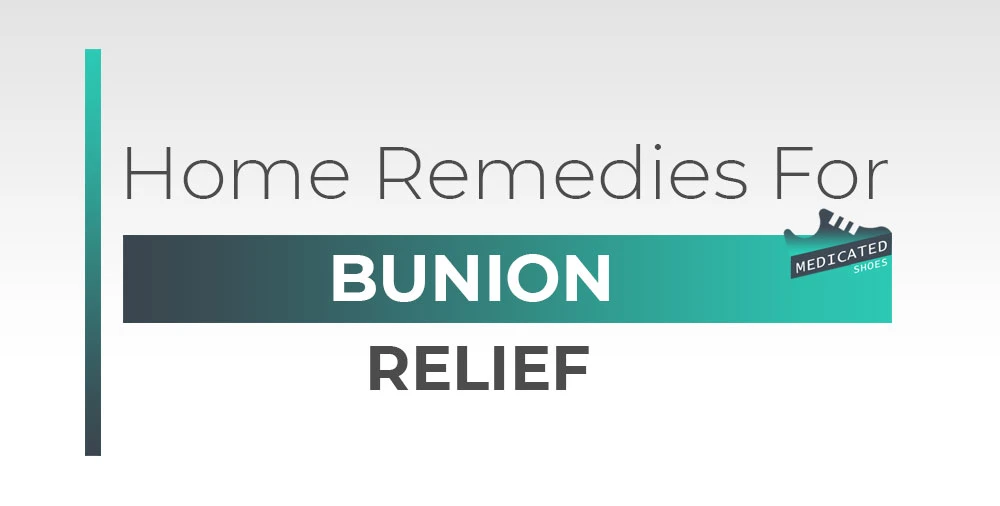While bunion surgery is the most effective treatment option there are also several home remedies that can provide temporary relief from bunion pain and discomfort.
These remedies can be used in conjunction with other treatments such as wearing proper footwear and taking over-the-counter pain medications to help manage the symptoms of a bunion. In this article, we will discuss some effective home remedies for bunion relief.
7 Best Bunion Pain Relief Home Remedies
Turmeric Paste
Turmeric is a spice that has long been used in traditional medicine for its anti-inflammatory effects which can help decrease swelling and discomfort caused by bunions. To use turmeric paste for bunion relief, follow these steps:
- Make the paste: Mix a teaspoon of turmeric powder with a few drops of water until it becomes a paste. You can also add a teaspoon of coconut oil or olive oil to make it easier to spread.
- Apply the paste to the bunion: Gently massage the turmeric paste into the skin around the bunion.
- Cover the bunion with a bandage: This will keep the paste in place and keep it from staining your clothes.
- Leave the paste on for at least 20-30 minutes: You can leave it on for longer if you want.
- Rinse off the paste: Use warm water to gently rinse the paste off your skin.
Ginger and Honey
Both honey and ginger are herbal medicines with anti-inflammatory characteristics that may be useful for reducing swelling and discomfort associated with bunions. Here’s how to use ginger and honey for bunion relief:
- Make ginger and honey paste: Grate a small piece of fresh ginger and mix it with a teaspoon of honey to make a paste. You can also add a teaspoon of coconut oil or olive oil to the paste to help it spread more easily.
- Apply the paste to the bunion: Gently massage the ginger and honey paste into the skin around the bunion.
- Cover the bunion with a bandage: This will help the paste stay in place and prevent it from dripping.
- Leave the paste on for at least 20-30 minutes: You can leave it on for longer if desired.
- Rinse off the paste: Use warm water to gently rinse the paste off the skin.
Castor Oil
Castor oil is a natural oil that has been used to treat a wide range of health issues including bunions. To use castor oil for bunion relief follow these steps:
- Warm the oil: Place a small amount of castor oil in a bowl and microwave it for about 10-15 seconds or until it is warm to the touch. Be careful not to make it too hot.
- Massage the oil into the bunion: Gently rub the warm castor oil into the skin around the bunion massaging it in a circular motion.
- Cover the bunion with a warm moist cloth: This will help the oil penetrate the skin more effectively.
- Leave the oil on for at least 20-30 minutes: You can leave it on for longer if desired.
- Rinse off the oil: Use warm water to gently rinse the oil off the skin.
Ice Packs
Using ice packs is a simple and effective home remedy for relieving bunion pain and swelling. Here’s how to use ice packs for bunion relief:
- Prepare the ice pack: Fill a plastic bag with ice cubes or use a store-bought ice pack.
- Wrap the ice pack in a towel: This will help prevent the ice from touching your skin directly and causing frostbite.
- Apply the ice pack to the bunion: Hold the ice pack against the bunion for 10-15 minutes at a time. You can do this several times a day as needed to help reduce swelling and discomfort.
- Take breaks: It’s important to give your skin a break between ice pack treatments to prevent frostbite. Wait at least an hour between treatments.
Epsom Salt Soaks
Epsom salt soaks are a popular home remedy for relieving bunion pain and swelling. Epsom salt is a type of salt that contains magnesium which can help reduce inflammation and muscle cramps. Here’s how to use Epsom salt soaks for bunion relief:
- Fill a foot bath or large bowl with warm water: Add a cup of Epsom salt to the water and stir until it is dissolved.
- Soak your foot in the water for 20-30 minutes: You can do this once or twice a day as needed to help reduce swelling and discomfort.
- Dry your foot thoroughly: After soaking use a towel to gently dry your foot, especially between the toes.
- Apply moisturizer: Massage a small amount of moisturizer into your foot to help soothe dry rough skin.
Massage
Massaging the area around a bunion can help reduce pain and swelling and improve circulation. Here are some steps to follow when massaging a bunion:
- Apply a small amount of massage oil or lotion to your hands: This will help the massage be more comfortable and allow your hands to glide over the skin more easily.
- Gently massage the area around the bunion: Use your fingers to apply gentle pressure to the skin massaging in a circular motion. You can also use your thumbs to apply firm pressure to the bunion itself.
- Massage for a few minutes: You can do this several times a day as needed to help reduce swelling and discomfort.
- Apply heat to the area after massaging: You can use a heating pad or hot water bottle wrapped in a towel to apply heat to the area. This can help soothe sore muscles and promote healing.
Stretching Exercises
Stretching your foot muscles and tendons can help reduce pain and make your foot more flexible. Here are some stretches that you can try:
- Toe stretch: Place a towel on the floor and use your toes to scrunch it up. This can help stretch and strengthen the muscles in your foot.
- Toe spread: Sit in a chair and place your foot on the floor in front of you. Use your toes to spread out a small towel or washcloth. This can help stretch the muscles in your foot and improve flexibility.
- Toe curl: Sit in a chair and place a small towel or washcloth on the floor in front of you. Use your toes to pick up the towel and curl it towards your ankle. This can help stretch and strengthen the muscles in your foot.
- Calf stretch: Stand facing a wall and place your hands on the wall at shoulder height. Step back with one foot and bend your front leg keeping your back leg straight. Hold the stretch for 30 seconds and then switch legs.
Apple Cider Vinegar Remove Bunions?
Apple cider vinegar is thought to have anti-inflammatory and antibacterial properties which may make it effective at reducing the swelling and pain associated with bunions. Some people claim that soaking their feet in a mixture of apple cider vinegar and warm water can help to soften the skin around the bunion and reduce inflammation. To use apple cider vinegar for bunion relief you can try the following steps:
- Dilute the apple cider vinegar: Mix equal parts apple cider vinegar and water. You can also add a few drops of essential oils such as tea tree oil or peppermint oil to the mixture for added benefits.
- Soak a cotton pad or cloth in the mixture: Gently wring out the excess liquid.
- Apply the cloth to the bunion: Hold the cloth against the bunion for 10-15 minutes. You can also wrap the affected foot in a warm towel to help the vinegar penetrate the skin more effectively.
- Repeat the process several times a day: You can do this for a few days or as needed to help reduce swelling and discomfort.
It’s important to note that while apple cider vinegar may provide temporary relief from bunion pain and swelling it is not a cure for bunions. If you are experiencing severe or persistent bunion pain it is best to consult a medical professional for treatment options.
Conclusion:
While bunion surgery is often the most effective treatment for bunions there are also a number of home remedies that can provide relief from the pain and discomfort associated with this condition.
By taking care of your feet and wearing comfortable supportive shoes you can help prevent the development of bunions or slow the progression of the deformity. If you’re experiencing persistent pain or discomfort from a bunion be sure to talk to your doctor for further evaluation and treatment.

